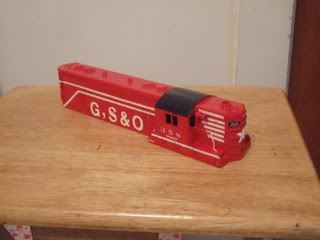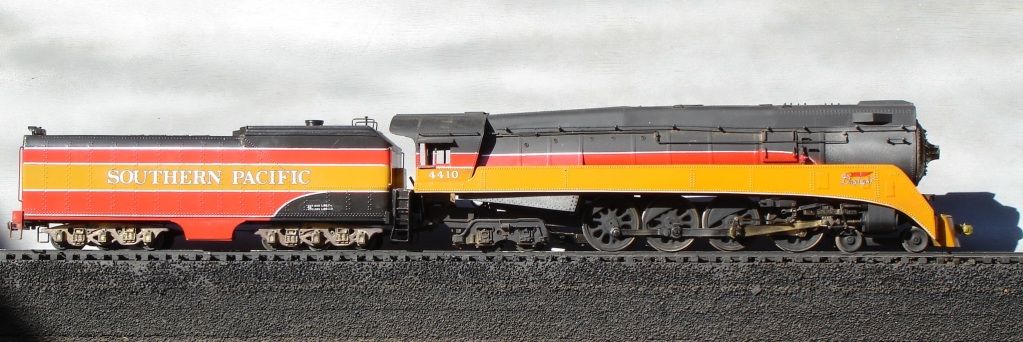I enjoy reading the various how-to topics on repainting locomotives and rolling stock. I hope to repaint some of my equipment in the future and all the helpful information being posted is going to come in handy. Most of the topics are about stripping, priming, types of paint, decals, etc. However, I don't recall reading much about painting straight lines. Many railroad liveries have stripes or different color fields separated by a straight line. You can do a great job of stripping and painting something, but if you make mistakes on the straight lines the errors are really noticeable.
So, I was hoping for some suggestions, tips, hints, etc. that people use to paint straight lines. Trying to think through the problem, I've come up with the following questions, but I don't have much experience in the subject matter, so I'm sure I left out some things.
1. How do scribe or mark the straight line on the loco?
I don't. I study it and note where, and perhaps make tiny reference marks, just pinpricks, at key points - if I can't avoid it.
2. What type of tape do you use for making the straight line?
I use the premium version of the blue masking tape you buy for painting - its marked something like "gives smooth even edges" or something. It is particularly necessary to make sure the edge if really flat and pushed down well so it adheres.
3. How do you apply the tape so it lays down in a straight line?
I position one end and press it into place and pull the tap tightly along the line I want and lightly press it in place, then check, then once good, press it down hard.
4. Do you seal or burnish the tape or take other steps to prevent paint from seeping under the tape?
No, I just make sure it is really, really tightly pressed down.
5. Do you paint a scheme in a certain order, i.e. light colors before dark colors, or main color before stripes, etc.?
No, I do not put light down first or dark down last. I generally plan the colors in the order I think will be easiest to assure I mask them so the thinest lines come out nicely. Right now I'm thinking about this ref. how to do a Warbonnet scheme, not sure actually).
6. How long do leave the tape on after painting?
I remove the tape when the paint is about fifteen minutes dried, not much longer. This is a delicate operation as it will mar the finish if it even brushes up against the wet paint, but I plan for easy removel when I apply the masking take.
7. How long do you wait for the paint to dry before taping again and starting the next color?
Usually, at least 24 hours if not several days.
8. Do you take any additional steps when painting additional colors, since you'll now be taping over final paint colors?
No. I do, however, make sure that all the colors I am using are the same type and brand of paint.
9. If your techniques vary depending on the type of paint, i.e. solvent based or water based, please point out the differences.
No.
Thanks for your help.
I've painted several locos this way, the latest the N&W J now in UP colors discussed in another thread active at this time. I also repainted a Legacy Southern Crescent flat black and have done five or six locos from [whatever they were] to Union pacific Armor yellow and gray. In none of these did I remove the body shell: I just mask the entire loco underside and wheels well as well as all the tiny details. masking can take much much longer than the painting.




